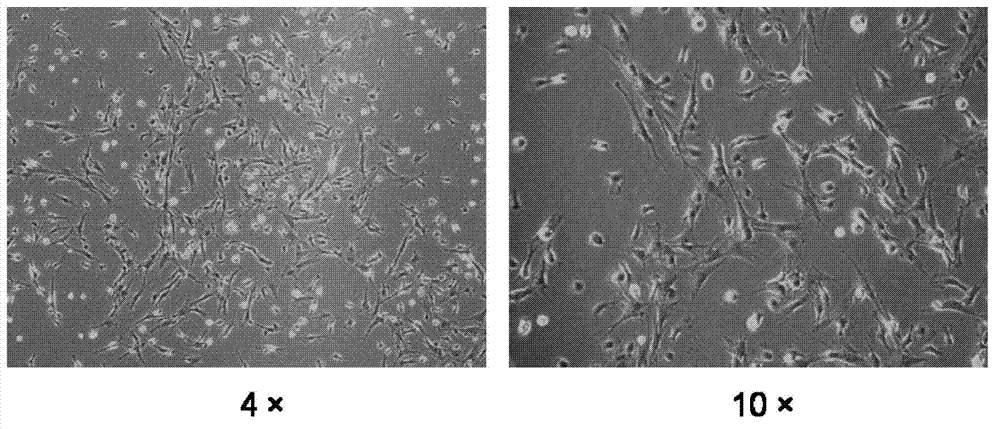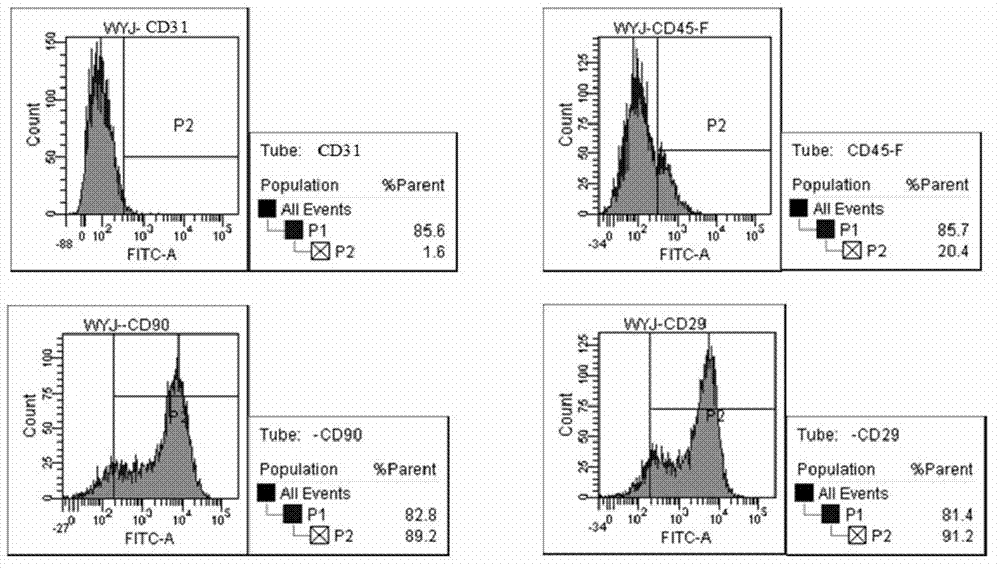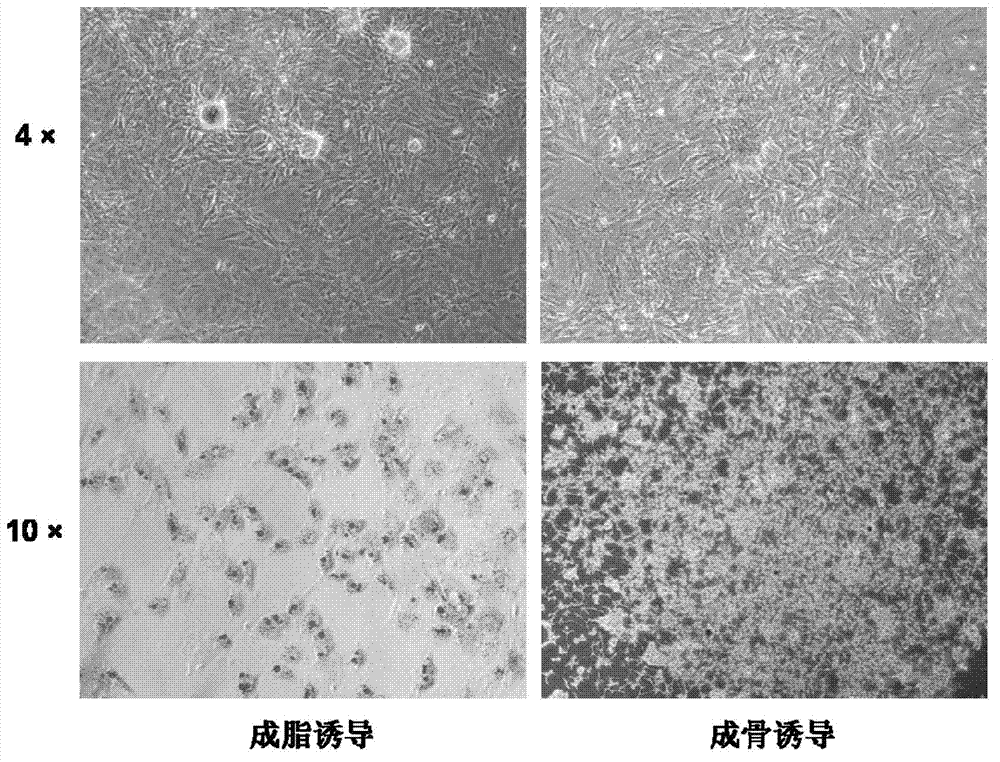Application of PD-L1 gene modified bone marrow mesenchymal stem cells in graft rejection
A PD-L1, bone marrow mesenchymal technology, applied in the biological field, can solve the problems of prolonging the survival time of the graft, unable to maintain the long-term survival of the graft, etc., to prolong the survival time of the limb, delay the transplant rejection, and has a broad application prospect. Effect
- Summary
- Abstract
- Description
- Claims
- Application Information
AI Technical Summary
Problems solved by technology
Method used
Image
Examples
Embodiment 1
[0054] Example 1: Isolation, culture and identification of bone marrow mesenchymal stem cells
[0055] (1) BMSCs culture in vitro
[0056] 1.1) 4-6 weeks of healthy lewis rats were put to death with 1% pentobarbital sodium anesthesia and soaked in 75% alcohol for 10 minutes. Take out the bilateral femur, tibia and humerus from the ultra-clean workbench, remove the attached muscles and periosteum and other tissues, and soak again with 1% nitrofural solution for 5 minutes.
[0057] 1.2) After rinsing twice with PBS solution, cut off both ends of the bone to expose the bone marrow cavity, draw the pre-cooled PBS from the bone end along the long axis, and rinse the bone marrow cavity repeatedly in the petri dish to collect the bone marrow. .
[0058] 1.3) The obtained bone marrow suspension was gently pipetted repeatedly with an elbow pipette to disperse it into a cell suspension, and a 200-mesh filter was used to remove the sediment to obtain a single cell suspension. Transfer the obta...
Embodiment 2
[0064] Example 2: In vitro gene transfection of bone marrow mesenchymal stem cells and phenotype identification after transfection.
[0065] (1) Obtaining the PD-L1 gene fragment. Take 100 mg of the muscle tissue of the lower limbs of Noway-Brown rats, and use RNA-Trizol to extract RNA. Synthesized in 500ng of mRNA by Takara reverse transcription kit. Obtain rat total cDNA. The rat PD-L1 gene sequence in GeneBank is NM001191954.1, and the electrophoresis results are as follows Figure 2A As shown, this figure is the result of gel electrophoresis of rat PD-L1 gene.
[0066] (2) Construction of the lentiviral expression vector pLVpuro / EF1α-PD-L1-IRES-GFP
[0067] The four-vector system of Gateway technology was used to construct the lentiviral expression vector pLVpuro / EF1α-PD-L1-IRES-GFP. For primers containing att sites, add attB1, attB2, attB2r, and attB3 to the 5'ends of the upstream and downstream primers, respectively. Construction and identification of pLVpuro / EF1α-PD-L1-IRE...
Embodiment 3
[0074] Example 3: PD-L1 transfection of bone marrow mesenchymal stem cells induces immune tolerance
[0075] (1) In vitro experiment PD-L1 transfected BMSCs inhibited the activation and proliferation of T lymphocytes in vitro anesthetized LEWIS and BN (Norway-Brown) rats, took out the spleen, made a single cell suspension, and used RPMI1640 containing 10% FBS The cell concentration of the medium was adjusted to 5×106 / ml, and BN rat spleen cells were used as reaction cells for use. The spleen cells of LEWIS rats treated with PHA to proliferate were used as stimuli to stimulate the proliferation of BN rat T cells in vitro. Take BMSCs and PD-L1-MSCs as intervention measures to detect their inhibitory effects on lymphocyte proliferation. The results suggest that PD-L1-MSCs can significantly inhibit the proliferation of lymphocytes caused by PHA stimulation in vitro.
[0076] (2) In vivo experiment PD-L1 transfected BMSCs inhibits the rejection of limb transplantation
[0077] A) Estab...
PUM
 Login to View More
Login to View More Abstract
Description
Claims
Application Information
 Login to View More
Login to View More - R&D
- Intellectual Property
- Life Sciences
- Materials
- Tech Scout
- Unparalleled Data Quality
- Higher Quality Content
- 60% Fewer Hallucinations
Browse by: Latest US Patents, China's latest patents, Technical Efficacy Thesaurus, Application Domain, Technology Topic, Popular Technical Reports.
© 2025 PatSnap. All rights reserved.Legal|Privacy policy|Modern Slavery Act Transparency Statement|Sitemap|About US| Contact US: help@patsnap.com



